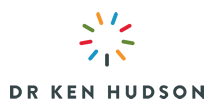Recently a healthcare client asked me to design and facilitate their next brainstorming session.
I always love this sort of work so I thought i would share my brainstorming facilitation design principles with a wider audience.
1. Have a crystal clear focus
My experience is that the more focussed the session is the more creative people have to be and the better the outcome.
Don’t be afraid of having a tight focus. In fact you should be more worried if the challenge is unclear or nebulous.
2. Send the brief out at least 48 hours beforehand
In this way you can remind people of the logistics of the session (i.e. when, where etc) and encourage people to start thinking about the challenge.
It is also a good idea to ask people if they have any questions about the challenge so this can be cleared up before the session begins.
In this way you can start on a positive note rather than getting immediately bogged down in what the session is about.
3. Ask people to do some pre-work
Many leaders shy away from this but i have found it invaluable.
For example with the healthcare session we are tackling a customer service issue so i have asked everyone to bring along one example of a great (or poor) customer service experience from outside the healthcare business.
This pre-work gets the participants imagination ticking along before the session begins and you might just snare a wonderful idea from studying another industry.
In another session for example with a major bank we asked everyone to Blitz the challenge by themselves and bring along their 3 best ideas ready to discuss right from the start.
With 10 people each bringing along potentially 3 ideas you have 30 different starting points.
4. Make the session short
An ideal time for any brainstorming session is 1.5 hours or shorter.
I have found that after this people get edgy and want to return to their emails and phones and a shorter session forces you to become more focussed.
You also increase your chances of getting people along with a shorter session.
5. Invite a diverse group
Again based on my experience (and research) a more creative and productive session emerges when you have a mixture of people who are close to the problem and those that are outside of it.
In this way you encourage people to challenge the existing mindset yet you do not waste time on ideas that are inpractical.
6. Work from the individual up
Brainstorming is a group process yet according to research better results can be obtained by the same number of people working by themselves.
In my sessions i have a mixture of both (i.e. individual and group).
The pre-work is completed individually which can then be discussed with a partner then a bigger group.
The other advantage of this bottom up process is that people have a greater opportunity to be heard and extroverts cannot dominate the session.
7. Evaluate as you go
This design principle goes against conventional advice but i have found that having a series of quick evaluation intervals throughout the session is more productive.
For example, you can say to the group — ok we have just finished an exercise — what are the best 3 ideas, what are the most original ones?
The group could then concentrate more on the most original ones.
8. Capture ideas as you go
There is nothing worse than trying to capture ideas at the end of the brainstorming session.
Whoever is unlucky enough to be selected always takes weeks to complete the task thus losing momentum in the process.
The other problem is to try and read people’s handwriting.
Much better to use our Blitz tool for example and capture the ideas immediately.
9 Have fun
This is a paradox.
Although the outcome and challenge may be serious you get more creativity when everyone is enjoying themselves.
Laughter, jokes and friendly banter is a sign that the session is going well and participants are realting to one another in a fun, informal way and those left-field ideas have a better chance of being generated.
Let me know how you go.
Happy Brainstorming.
Ken
